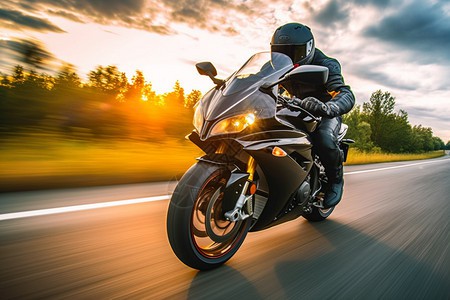Understanding Motorcycle Battery Demands: Balancing Starting Power and Lighting Performance
Introduction
A motorcycle battery plays a crucial role beyond just starting the engine. While it’s easy to think of the ltihium battery primarily as the source of power for the starter motor, it also supplies electricity to important systems like headlights, taillights, turn signals, and instrument panel lighting. Both the starting system and lighting system use the same battery as their power source, which means the battery must handle different electrical demands simultaneously. This highlights why selecting a reliable Motorcycle Lighting Battery is essential for maintaining both starting performance and lighting reliability.
How Motorcycle Electrical Systems Function
At the heart of every motorcycle’s electrical system is a battery that provides direct current (DC) power, especially when the engine is off or running at low speed. The system includes:
-
The starting system, which requires a high current burst to crank the engine
-
The lighting system, which demands a steady, reliable current to power headlights, brake lights, turn signals, and dashboard illumination
-
The charging system, consisting of an alternator (or stator), a rectifier, and a voltage regulator, which replenishes the battery’s charge during operation
When the engine is running, the alternator generates electricity to power all electrical components and recharge the battery. However, when the engine is off or idling, the battery alone supplies power for all needs, including lighting.
One Battery, Two Key Roles
Motorcycles typically have a single battery serving multiple systems. This battery must deliver high power briefly for starting and provide steady power for lighting and other electrical components. These two demands have distinct electrical characteristics:
Starting System Demands
-
Requires a high current output for a short duration
-
Measured by Cold Cranking Amps (CCA), indicating how much current the battery can deliver at low temperatures
-
Performance can degrade with age or in cold weather conditions
Lighting System Demands
-
Requires a consistent, moderate current over longer periods
-
Needs stable voltage to maintain light brightness and reliability
-
Insufficient battery capacity can cause dimming, flickering, or unreliable signals
Choosing the right Motorcycle Lighting Battery means finding a balance that supports both the starting and lighting systems effectively.
Common Misunderstandings
Issues like dimming headlights, flickering turn signals, or difficulty starting are sometimes mistakenly attributed to bulbs or ignition components. Often, these problems stem from a battery struggling to meet both starting and lighting demands simultaneously. For example:
-
Headlight flickering when braking or idling
-
Difficulty starting despite a functioning charging system
-
Erratic or inconsistent turn signal operation
-
Rapid voltage drops under electrical load
Recognizing that both systems rely on the same battery helps avoid misdiagnosis and unnecessary repairs.
Key Battery Specifications to Consider
A well-chosen motorcycle battery should balance:
-
High CCA ratings to ensure reliable engine starts
-
Sufficient amp-hour (Ah) capacity to support lighting and accessories
-
Low internal resistance to minimize voltage drops
-
Stable performance across temperature ranges
Here’s how these specs impact starting and lighting systems:
| Specification | Importance for Starting | Importance for Lighting |
|---|---|---|
| Cold Cranking Amps (CCA) | High | Moderate |
| Amp-Hour Capacity (Ah) | Moderate | High |
| Voltage Stability | Moderate | High |
| Charge Acceptance Rate | High | Moderate |
| Maintenance Requirements | Low | Low |
Popular Motorcycle Battery Types
Different battery technologies offer trade-offs in performance and maintenance:
Flooded Lead-Acid Batteries
-
Affordable and widely available
-
Require maintenance such as electrolyte topping
-
Sensitive to vibration and cold temperatures
-
Suitable for older or lower-power motorcycles
Absorbent Glass Mat (AGM) Batteries
-
Sealed and maintenance-free
-
Better vibration resistance and cold-start performance
-
Slightly heavier and more expensive than flooded batteries
-
Ideal for daily riders seeking reliability
Lithium Iron Phosphate (LiFePO₄) Batteries
-
Lightweight with high CCA and long lifespan
-
Fast charging capabilities
-
Sensitive to cold and may require compatible charging systems
-
Suitable for performance motorcycles and riders prioritizing weight savings
Always ensure compatibility of battery chemistry with the motorcycle’s charging system.
Impact of Lighting Load on Battery Health
While lighting consumes less current than starting, it draws power for longer periods, especially during night rides or when using additional accessories like LED strips, GPS devices, or heated grips. Heavy lighting loads can cause:
-
Faster battery discharge at idle
-
Insufficient recharging on short trips
-
Increased alternator load, reducing voltage during low engine speeds
To reduce battery strain:
-
Use energy-efficient lighting like LEDs
-
Limit additional electrical accessories unless the charging system is upgraded
-
Avoid leaving ignition or lights on when the engine isn’t running
Choosing the right Motorcycle Lighting Battery that handles continuous loads well helps mitigate these issues.
Signs a Battery May Be Failing
Since one battery supports both starting and lighting, issues in either area might indicate battery degradation. Watch for:
-
Slow or difficult engine starts
-
Dimming lights at low engine speeds
-
Frequent need for external charging
-
Resting voltage below approximately 12.4 volts
-
Battery age beyond three to four years, even with proper care
Maintaining Your Motorcycle Battery
To maximize battery lifespan and performance:
-
Check voltage regularly to ensure resting voltage stays above 12.6 volts
-
Use a smart maintainer or trickle charger when the bike is stored long-term
-
Keep battery terminals clean and corrosion-free
-
Ride regularly and avoid very short trips that don’t allow full recharging
-
Store the bike in a cool, dry place to prevent overheating and moisture damage
Environmental and Seasonal Considerations
Battery efficiency varies with environmental conditions:
-
Cold temperatures reduce chemical reaction efficiency and CCA output
-
Heat accelerates electrolyte evaporation and plate corrosion
-
Humid or salty environments promote terminal corrosion
-
Short winter rides may drain battery power faster than it can recharge
Adjust maintenance frequency based on your climate and usage patterns.
Conclusion
Motorcycle batteries face demanding dual roles—providing the high current needed to start the engine and the steady power required for lighting and electrical systems. Understanding these demands and maintaining the battery accordingly helps prevent unexpected failures and enhances riding safety.
By recognizing that the starting system and lighting system both depend on the same power source, riders can better troubleshoot issues and extend battery life. Proper care and choosing the right battery specifications ensure your motorcycle performs reliably, whether you’re commuting daily or enjoying a night ride.
Selecting a quality Motorcycle Lighting Battery tailored to your motorcycle’s needs is key to achieving this balance.


